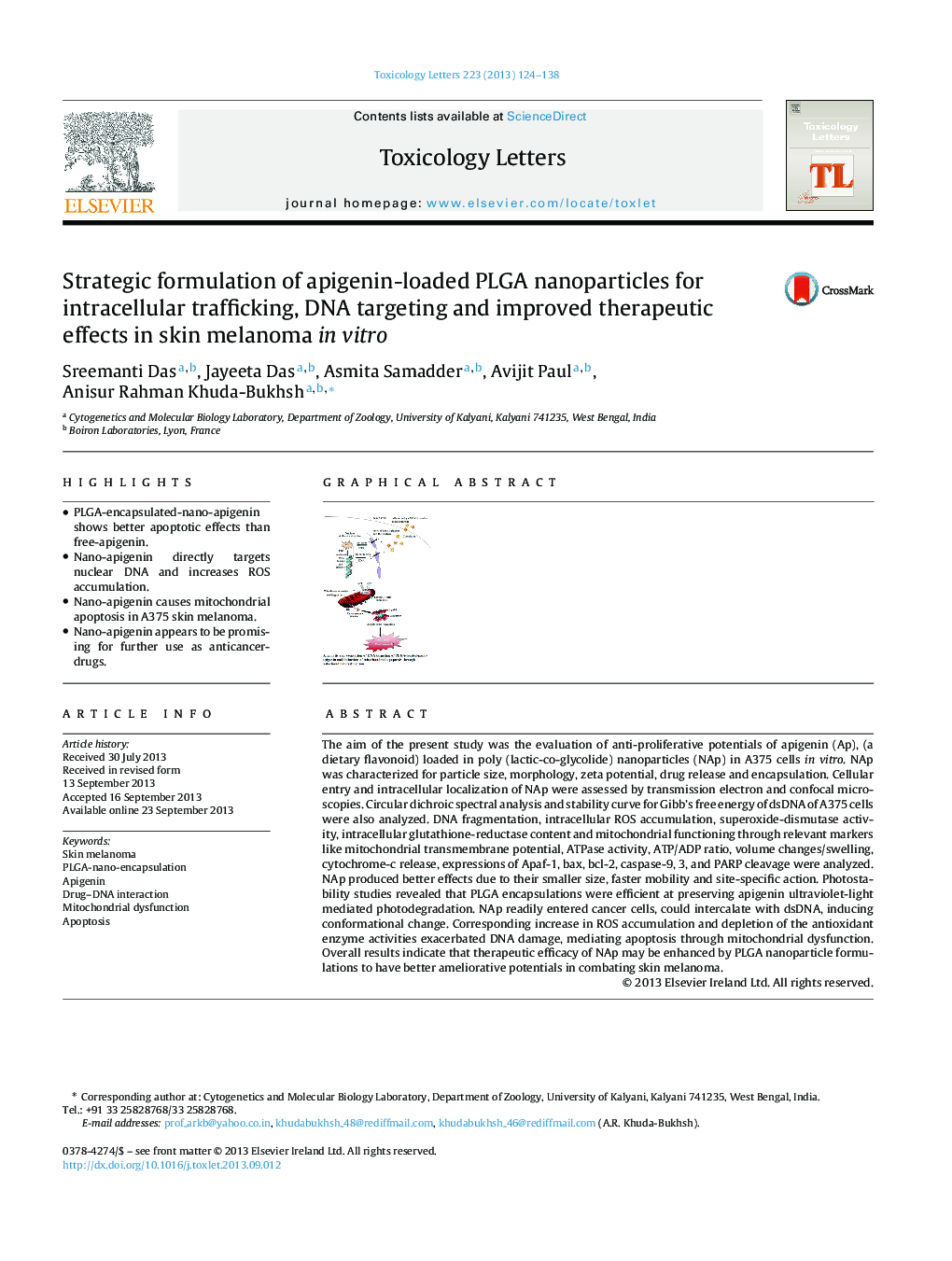| کد مقاله | کد نشریه | سال انتشار | مقاله انگلیسی | نسخه تمام متن |
|---|---|---|---|---|
| 2599134 | 1133191 | 2013 | 15 صفحه PDF | دانلود رایگان |

• PLGA-encapsulated-nano-apigenin shows better apoptotic effects than free-apigenin.
• Nano-apigenin directly targets nuclear DNA and increases ROS accumulation.
• Nano-apigenin causes mitochondrial apoptosis in A375 skin melanoma.
• Nano-apigenin appears to be promising for further use as anticancer-drugs.
The aim of the present study was the evaluation of anti-proliferative potentials of apigenin (Ap), (a dietary flavonoid) loaded in poly (lactic-co-glycolide) nanoparticles (NAp) in A375 cells in vitro. NAp was characterized for particle size, morphology, zeta potential, drug release and encapsulation. Cellular entry and intracellular localization of NAp were assessed by transmission electron and confocal microscopies. Circular dichroic spectral analysis and stability curve for Gibb's free energy of dsDNA of A375 cells were also analyzed. DNA fragmentation, intracellular ROS accumulation, superoxide-dismutase activity, intracellular glutathione-reductase content and mitochondrial functioning through relevant markers like mitochondrial transmembrane potential, ATPase activity, ATP/ADP ratio, volume changes/swelling, cytochrome-c release, expressions of Apaf-1, bax, bcl-2, caspase-9, 3, and PARP cleavage were analyzed. NAp produced better effects due to their smaller size, faster mobility and site-specific action. Photostability studies revealed that PLGA encapsulations were efficient at preserving apigenin ultraviolet-light mediated photodegradation. NAp readily entered cancer cells, could intercalate with dsDNA, inducing conformational change. Corresponding increase in ROS accumulation and depletion of the antioxidant enzyme activities exacerbated DNA damage, mediating apoptosis through mitochondrial dysfunction. Overall results indicate that therapeutic efficacy of NAp may be enhanced by PLGA nanoparticle formulations to have better ameliorative potentials in combating skin melanoma.
Figure optionsDownload as PowerPoint slide
Journal: Toxicology Letters - Volume 223, Issue 2, 25 November 2013, Pages 124–138